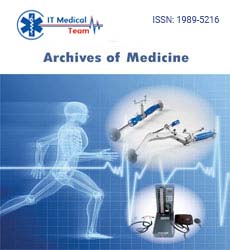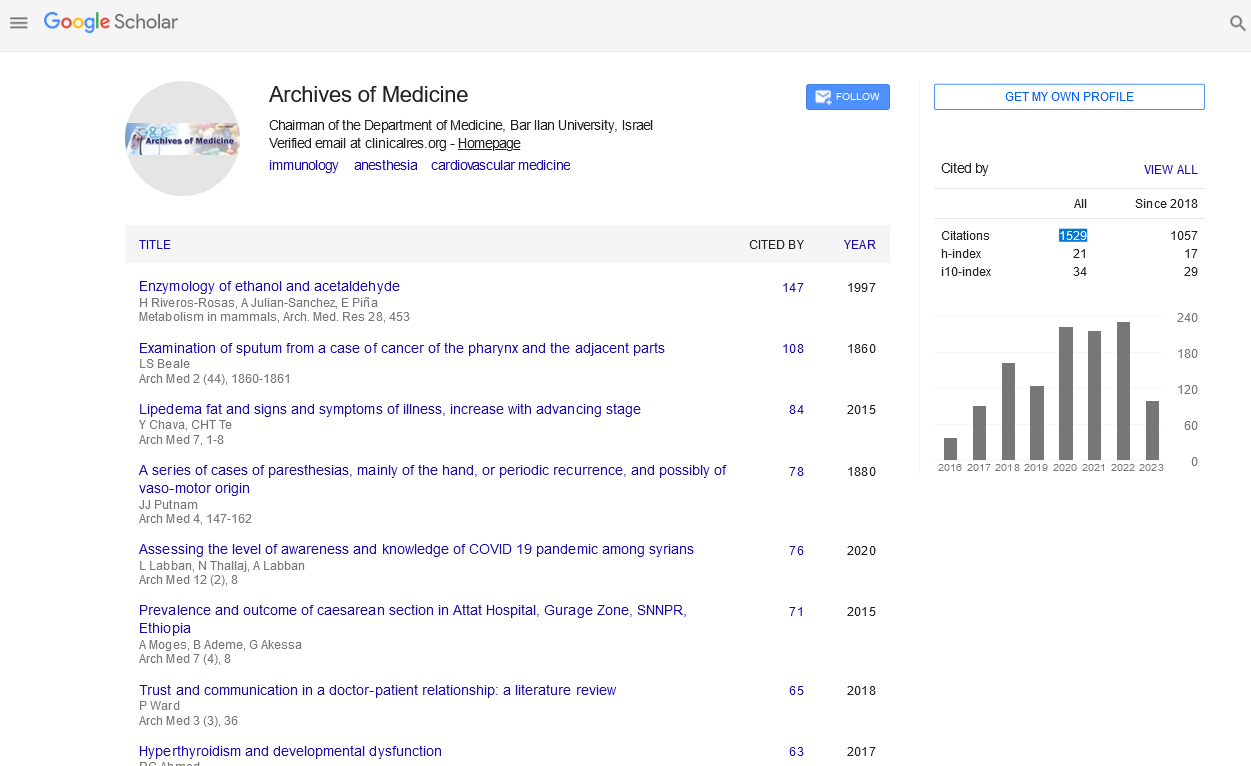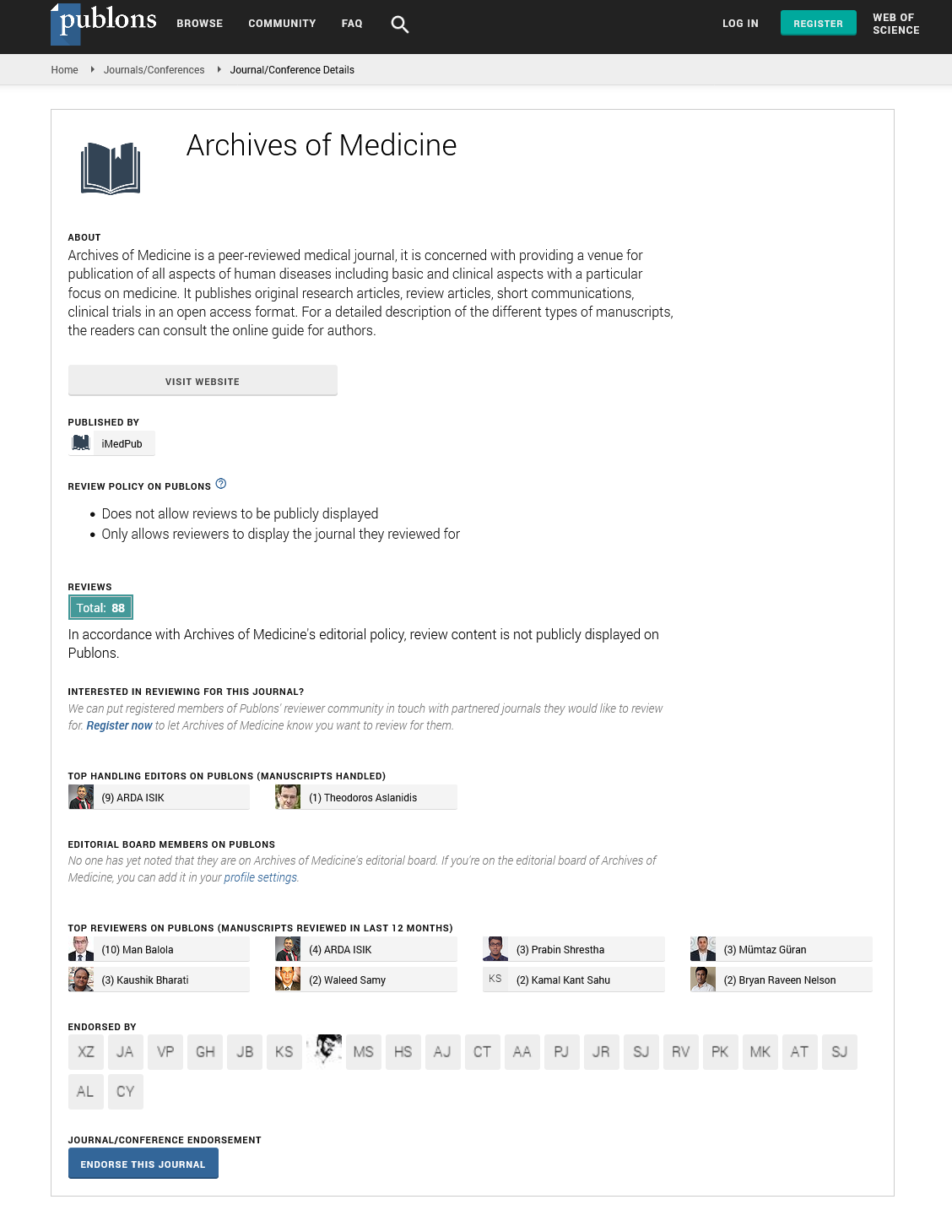Review Article - (2023) Volume 15, Issue 5
Viability of durvadya taila and manjisthadi kwatha for youngsters' dermatitis: A review
Varashree Suryakanth*
Department of Biochemistry, Kasturba Medical College, Manipal, Manipal Academy of Higher Education, Karnataka, India
*Correspondence:
Varashree Suryakanth, Department of Biochemistry, Kasturba Medical College, Manipal, Manipal Academy of Higher Education, Karnataka,
India,
Email:
Received: 15-Aug-2023, Manuscript No. ipaom-23-14120;
Editor assigned: 17-Aug-2023, Pre QC No. P-14120;
Reviewed: 02-Sep-2023, QC No. Q-14120;
Revised: 08-Sep-2023, Manuscript No. R-14120;
Published:
15-Sep-2023
Abstract
Ayurvedic pediatric OPDs much of the time face the Kshudra
kustha sort of Vicharchika, which is set apart by the side effects
Kandu (tingling), Srava (release), Pidaka (vesicles) and Shyava
Varna (staining). Dermatitis sores that are dry and blackish are
brought about by Vata contribution, though tingling in the
tormented locales is brought about by Kapha and Srava by Pitta.
Skin inflammation and Vicharchika are more comparable than not.
Shodhana and Shamana treatment are stressed in the conventional
texts of Ayurveda as a line of treatment at different places in the
administration of Kustha. Shamana treatment is best over Shodhana
treatment in young people. To evaluate the viability of Durvadya
Taila and Laghu Manjisthadi Kwatha in Vicharchika in kids matured
5 to 16 years, a clinical exploration was carried out utilizing both
comprehensive and elite measures. Patients got LaghuManjisthadi
Kwatha two times day to day for 45 days while likewise getting
outer use of Durvadya Taila and they were reached for follow-up
care following 15 days of treatment finish. In a gathering of 30
patients, most of patients (86.67%) had extensive improvement,
6.7% had total reduction and 6.67% had gentle improvement.
Durvadya Taila and Laghu Manjisthadi Kwatha are clearly protected
and successful in the administration of Vicharchika in kids, as per the
clinical examination.
Keywords
Vicharchika; Eczema; Kustha; Durvadya Taila; Laghu
Manjisthadi Kwatha
Introduction
The skin, the most noticeable organ of the body, plays a
critical part in physical, social and mental correspondence.
It likewise incredibly impacts how we appear. The
development of skin issues hinders the capability of the
skin. Pediatricians treat patients with dermatological
issues consistently, making up around 25% of a bustling
short term practice. All types of skin conditions have been
canvassed in Ayurveda under the umbrella term Kustha,
which is additionally separated into Maha Kustha and
Kshudra Kustha. One of the Kshudra Kustha is Vicharchika.
Vicharchika is a skin condition where emissions across the
skin arise with dull pigmentation, tingling and bountiful
release from the injury, as per Acharya Charaka.
Literature Review
Eczema
As indicated by Acharya Sushruta, Vicharchika is
described by extraordinary tingling, extreme inconvenience
and dryness. As indicated by Acharya Kashyapa,
Vicharchika is the presence of dark, red ulcers with agony,
releases and festering across the skin. Skin inflammation
and vicharchika are practically identical. Skin aggravation
known as dermatitis isn't transmittable and is portrayed
by erythema, scaling, edema, vesiculation and spilling.
Skin inflammation, generally known as atopic dermatitis,
is portrayed by skin aggravation. Patches of skin that
are textured or hard, now and again joined by redness,
rankling and tingling, are the primary side effects of the
issue. The most common intermittent skin condition that
influences youngsters and newborn children is dermatitis
[1]. The seven significant elements that have an impact
in the pathophysiology of this skin sickness are the three
vitiated doshas of vata, pitta and kapha, as well as weakened
tvak, rakta, mamsa and ambu. Kapha is the major dosha
embroiled in Vicharchika. Most Vicharchika (Skin
inflammation) patients who don't answer well to customary
clinical treatment look for Ayurvedic treatment with high
any expectations of being restored of their condition.
Laghu Manjisthadi Kwatha
Eight unique drugs make up Laghu Manjisthadi Kwatha.
The essential dosha engaged with the pathophysiology of
Vicharchika, Kaphapittahara, is one of the Tridoshahara
characteristics shared by every one of the fundamental parts
of this kwatha. A sickness with a Kapha transcendence is vicharchika. In this definition, Tikta, Kashaya rasa, Laghu,
Rukshaguna, Ushna virya and Katuvipaka make up most
of the drugs. These medication related characteristics help
in lessening kapha and pittadosha. All prescriptions joined
with the characteristics of Kustaghana, Kandughana,
Krimighna, Rasayana, as well as Varnya, Lekhana and
Dahaprashamana [2].
Most of endorsed yoga drugs contain Tiktarasa, which
further develops Agni and helps in Srotoshuddhi by tending
to Amashaya and Amacondition. These prescriptions have
raktashodhaka and raktaprasadana qualities because of the
strength of tikta and kashayarasa. These characteristics
straightforwardly benefit Kandu, Daha, Vaivarnata, Pidika
and Srava as rakta is one of the essential dushya in Tvak
vikara. Manjistha and Daruharidra's Raktasodhaka and
Vranashodhana attributes display Kustaghana action and
help in the mending of wounds. It has been exhibited that
these prescriptions have an injury recuperating impact. The
harithaki's srotoshodhaka property advances solid blood
stream, takes care of the tissues and makes an enemy of
hypersensitive difference. Dushtapitta can be eliminated
and the raktadushti can be revised with katuki [3,4].
Discussion
Manjistha, Daruharidra, Amalaki, Nimba and
Harithaki all have varnya properties that guide in limiting
skin staining. While treating the illness, Lekhaniyaguna of
Daruharidra and Katuki is useful in lessening skin thickness
and Vaivarnata. Manjistha, Daruharidra, Amalaki and
Harithaki's Rasayana karma adds to a lessening in the
repeat of Vicharchika. Since rasayana drugs have cancer
prevention agent and immunomodulatory activities, they
are used to keep up with great wellbeing. research on
the previously mentioned prescriptions As indicated by
Charaka, Vibhitaki can recuperate all ailments welcomed
on by Rasa, Rakta and Mamsadhatudushti. This leads
us to the end that it influences Rasavaha, Raktavaha and
Mamsavahasrotas since they are principally engaged with or
affected by the pathophysiology of Vicharchika. Nimba and
Amalaki, specifically, contain Dahaprashamana properties
that guide in decreasing Vicharchika's Daha condition
[5,6]. These characteristics will support diminishing the
pathogenesis of Vicharchika as well as the side effects of
Kandu, Vaivarnata, Pidika, Rukshata, Srava, Daha and
Ruja.
Conclusion
The clinical investigation unequivocally discovers that
Durvadya Taila for outer application and LaghuManjisthadi
Kwatha inside could be a solution for Vicharchika and
that they can be utilized in other Kusthas too, particularly
the Kaphaja-Pittaja Kusthas depicted in exemplary texts,
without creating any secondary effects. Intense sickness
stages have a preferable forecast over constant infection
stages. Subsequently, early analysis and treatment are
urgent. Long haul therapy with Durvadya Taila and Laghu
ManjisthadiKwatha is expected for the all out mending of
Vicharchika, particularly in constant cases.
Acknowledgement
None.
Conflict of Interest
No conflict of interest.
References
- Kantor R, Thyssen JP, Paller AS, et al. Atopic dermatitis, atopic eczema, or eczema? A systematic review, meta‐analysis and recommendation for uniform use of ‘atopic dermatitis. Allergy. 2016;71(10):1480-5.
Google Scholar, Crossref, Indexed at
- Schmitt J, Langan S, Stamm T, et al. Core outcome domains for controlled trials and clinical recordkeeping in eczema: International multiperspective Delphi consensus process. J Investig Dermatol. 2011;131(3):623-30.
Google Scholar, Crossref, Indexed at
- Zink AG, Arents B, Fink-Wagner A, et al. Out-of-pocket costs for individuals with atopic eczema: A cross-sectional study in nine European countries. Acta Derm. 2019;99(3):263-7.
Google Scholar, Crossref, Indexed at
- Chong M, Fonacier L. Treatment of eczema: Corticosteroids and beyond. Clin Rev Allergy Immunol. 2016 Dec;51:249-62.
Google Scholar, Crossref, Indexed at
- Simpson EL. Atopic dermatitis: A review of topical treatment options. Curr Med Res Opin. 2010;26(3):633-40.
Google Scholar, Crossref, Indexed at
- Palesh OG, Roscoe JA, Mustian KM, et al. Prevalence, demographics and psychological associations of sleep disruption in patients with cancer: University of Rochester Cancer Center–Community Clinical Oncology Program. J Clin Oncol. 2010;28(2):292.
Google Scholar, Crossref, Indexed at






